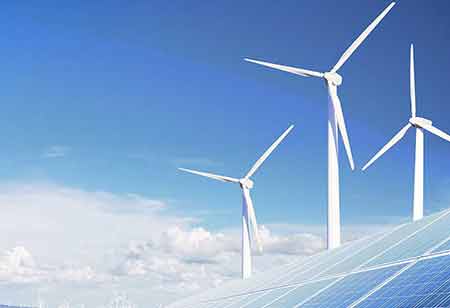Thank you for Subscribing to Energy Business Review Weekly Brief
Different Types of Green Energy
Green energy is a solution to higher sustainability in our power grid.

By
Energy Business Review | Saturday, January 29, 2022
Stay ahead of the industry with exclusive feature stories on the top companies, expert insights and the latest news delivered straight to your inbox. Subscribe today.
As we become increasingly informed of our impact on the environment, the significance of transitioning from standard energy resources to renewable sources is turning clearer to consumers.
Fremont, CA: Green energy is a solution to higher sustainability in our power grid. As we become increasingly informed of our impact on the environment, the significance of transitioning from conventional energy resources to renewable sources is turning clearer to consumers. Still, the term is met with confusion by some and is commonly used to mean renewables by others.
What Is Green Energy?
The U.S. energy market offers a range of services and products with green energy, also named green power, a small category within these options. For many, this is similar to renewable energy, but there is a clear distinction.
Types of Green Energy:
Many types of green energy come from a wide variety of sources. Some of these types are better appropriate to specific environments or regions, which is why there is so much renewable energy that filters into the energy grid.
Solar Energy
Solar is a clear origin of the energy that comes straightly from the sun. Stars, generally, produce an unimaginable amount of energy through nuclear fusion— the process by which smaller atoms are consolidated by heat and pressure to create heavier atoms—with a lot of energy emitted. This energy reaches us via solar radiation, which we can collect and convert into usable electricity.
Solar panels are perhaps the most general form of solar energy harvesting. These are panels full of things named photovoltaic cells. When the light from the sun strikes these cells, they create an electrical current with the photoelectric effect. The current is then passed with an inverter to turn it into an alternating current. From here, it can be utilized to power your home or added to the national grid mix.
Wind Energy
Wind energy is another energy source powered by the sun. That’s because the uneven heating of the atmosphere causes winds. This unevenness is influenced by the topology of our planet, its spin, and how we orbit around the sun. The surface further modulates winds they pass over—either land or water.
Three-blade wind turbines are most usually associated with wind power. Unlike solar energy, these operate on a rather simple principle. The wind turns the turbine blades, which turn an internal rotor.
This rotor moves the main shaft, spins a generator, and creates electricity.
Even though the wind may seem powerful, expansive wind farms are necessary to generate enough electricity to make an impact.
Hydroelectric Energy
Hydroelectric energy is generated by catching the energy contained within flowing water. This is best adept by forcing water to flow using a narrow path, increasing its energy per square meter. This is commonly accomplished by storing water in a reservoir or dam and selectively purging the water by opening an intake.
The gravitational potential energy saved by holding water higher up in the dam forces the intake at incredible speed. When discharged, the flow spins a turbine, which triggers a generator, creating electricity.
Because of its efficacy, hydroelectricity is one of the most famous forms of green energy. In 2017 alone, it is approximated that 4 billion tonnes of greenhouse gases were not released into our atmosphere by producing electricity from hydropower.
Biogas
The attractiveness of biogas, if it can be explained as such, is that it is not just a green energy source but also uses our waste products. Biogas is produced as a byproduct when organic matter decomposes from materials such as sewage, food, agricultural waste, and manure.
These materials are collected in containers without oxygen, causing them to ferment and produce methane, carbon dioxide, and other gases. The methane produced can then be sold and used to heat homes, produce electricity, and fuel vehicles. At the same time, the waste in a biogas digester turns into nutrient-rich fertilizer, perfect for farms and even home use.
Biomass
Like biogas, biomass is a root of green energy that comes from plants and animals—both of which comprise energy stored from the sun, often in the form of sugar or cellulose. When converting biomass into usable energy, much of this material is made into biogas and liquid biofuels, including ethanol and biodiesel.
Other solid materials like wood can be burned by themselves to heat buildings and produce electricity. As per the EPA, around 5% of the total energy consumed in the U.S. in 2017 came from biomass fuels.






